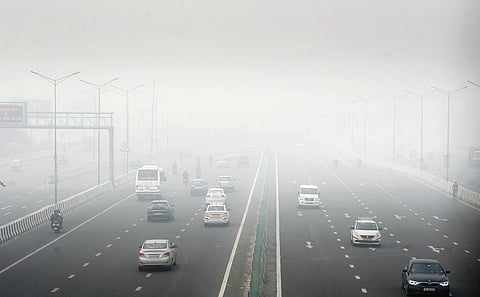

NEW DELHI: Winter smog is usually associated with the Delhi-NCR region, but the phenomenon affects all of northern India with even smaller cities recording high pollution levels, claims a report by the Centre for Science and Environment (CSE) released on Wednesday, December 15, 2021. CSE’s analysis is based on an assessment of annual and seasonal trends of PM2.5 concentrations between January 1, 2019, and November 30, 2021.
“This analysis puts a spotlight on the cities of Punjab, Haryana, UP and Rajasthan, besides Delhi and NCR, to understand the synchronised pattern of pollution during winter when atmospheric changes entrap pollution across the region,” said Anumita Roychowdhury, executive director, research and advocacy, CSE.
This means even smaller cities with lower annual average levels record pollution levels as bad as or even worse than Delhi’s. For instance, Vrindavan, Agra and Firozabad in UP have comparatively lower annual average PM2.5 than Delhi. But during the early winter of 2021, their weekly average PM2.5 levels exceeded that of Delhi, the analysis showed. “This demands action at scale and speed across all key sectors of pollution in the larger region,” she added.
The analysis covered 137 air quality monitoring stations across 56 cities in the region. Avikal Somvanshi, programme manager, Urban Lab, CSE, said that even though air quality monitoring is limited and data for a large part of northern India is under-reported, available evidence clearly points to the magnitude of the
regional problem.
Cities in UP, besides Delhi-NCR, top the list of those with the highest average PM2.5 concentrations in north India. The analysis also highlighted that early winter smog is synchronised across the region, but lasts longer in Delhi-NCR. “These episodes linger longer only in Delhi, NCR and UP during the rest of the winter. Atmospheric changes during winter that lead to inversion, calm conditions, change in wind direction, and seasonal drop in ambient temperature entrap pollution across north India.
This is further tripped into a severe category by smoke from farm fires and Diwali firecrackers during November,” the report stated. Air quality improves from ‘severe’ to ‘poor’ and ‘moderate’ categories in cities of Punjab and north Haryana after the stubble fire season, but remains in the ‘very poor’ category in NCR and UP till February.